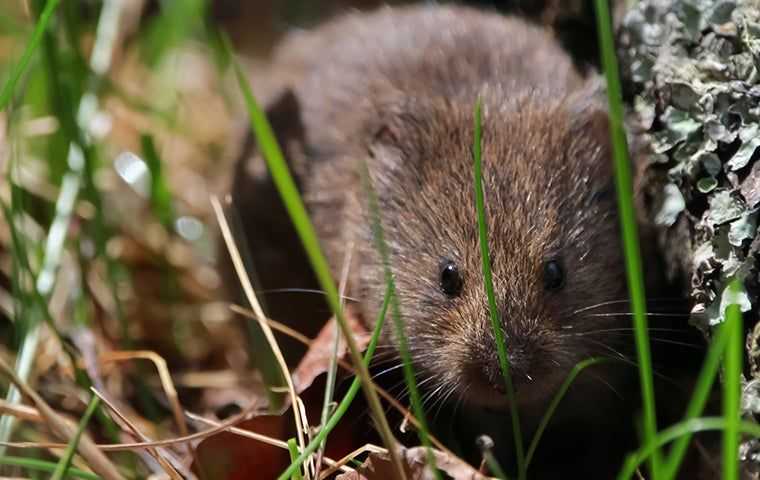Secure Your Grass: Effective Vole Control Techniques
Secure Your Grass: Effective Vole Control Techniques
Blog Article
Understanding Vole Insect Control: In-depth Insights on Infestation Avoidance and Treatment Techniques
By identifying the refined signs of vole infestation early on, we can take proactive steps to stop extensive damage. In this discussion, we will certainly explore the subtleties of vole actions, dig into the identification of problem indicators, and discover the most efficient prevention and therapy methods.
Comprehending Vole Habits
Taking a look at the foraging patterns of voles provides valuable insights into their habits and habitat preferences. Voles, small rodents appearing like mice, are herbivores understood for their underground tunneling activities. By observing their foraging behavior, scientists can acquire a better understanding of where voles favor to develop their habitats and the degree of their ecological impact. Voles are prolific breeders, with a solitary women capable of producing a number of trashes in a year, making it critical to comprehend their actions for reliable parasite control approaches.
Study suggests that voles exhibit careful feeding routines, liking origins, tubers, and seeds. This nutritional preference affects their foraging patterns, leading them to areas abundant in plant life and ground cover. Furthermore, voles are understood to develop intricate passage systems for foraging and nesting functions, suggesting a high degree of adaptability to their surroundings.
Understanding vole actions is important for applying targeted bug control procedures that interrupt their environment preferences and foraging activities (vole yard damage). By examining their actions, professionals can establish a lot more effective avoidance and therapy techniques to manage vole problems

Identifying Indicators of Vole Invasion
Vole invasions can be identified by recognizing certain indicators of their existence in an area. One of the most typical indications of a vole infestation is the visibility of surface area paths.
One more vital indicator of vole problem is the existence of small burrow openings in the ground. Additionally, voles are known to leave behind chewed plant stems, origins, and bulbs near their burrow openings, indicating their feeding task in the location.
Finding these droppings along paths or near burrow openings can validate a vole invasion. By being alert for these indicators, residential or commercial property owners can quickly attend to vole infestations and stop more damage.
Implementing Positive Prevention Procedures

Additionally, utilizing all-natural vole deterrents like castor oil-based repellents or predator urine can act as efficient safety nets. It is additionally suggested to consistently inspect outside areas for any indications of vole activity, such as paths or tunnel openings, to deal with prospective problems without delay. vole lawn damage. By adopting these positive prevention strategies, homeowner can considerably reduce the probability of vole damage and maintain the health and appearances of their landscapes
Efficient Treatment Methods
Including targeted trapping techniques and utilizing authorized rodenticides are crucial components of effective therapy techniques for handling vole problems. Trapping can be a reliable means to minimize vole populaces, particularly when positioned tactically in their energetic runways. Snap traps and live catches can both work, with the latter permitting for the capture and relocation of voles. When utilizing rodenticides, it is critical to adhere to safety and security standards to stop injury to non-target pets and pets. Place rodenticides in secure bait stations to minimize dangers to unintentional targets. Furthermore, environment alteration, such as decreasing ground cover and removing sources of food, can assist prevent voles from infesting a location. Regular monitoring and maintenance are also crucial elements of successful treatment techniques to make certain that vole populations are maintained under control. By integrating capturing, rodenticides, habitat modification, and constant monitoring, reliable vole bug control can be achieved.
Monitoring and Upkeep Tips
Keeping an organized timetable for surveillance and conducting regular upkeep tasks is essential to sustain the effectiveness of vole pest control actions. Normal tracking enables the very early discovery of vole task, allowing timely treatment prior to invasions aggravate. To effectively keep an important link eye on vole populaces, tactically put traps can be utilized in vole runways or near burrow entryways. By regularly inspecting these catches, homeowner can gauge the level of vole task and adjust control methods accordingly.
Additionally, maintaining a neat and well-kept landscape is necessary in vole avoidance. Cleaning away debris, such as piles of timber or thick vegetation, gets rid of possible vole habitats. Frequently trimming yards and cutting plants helps decrease vole hiding areas and reduces their access to food sources.
Moreover, continuous upkeep of physical obstacles, such as fences or cord mesh, is crucial to protect against vole intrusion. Inspecting and repairing any problems to these frameworks ensures that vole control remains reliable in guarding residential properties from infestations. By integrating these monitoring and upkeep methods right into a thorough vole parasite control strategy, people can properly take care of vole populaces and shield their buildings from damages.
Verdict
To conclude, mastering vole bug control needs a strong understanding of vole behavior, the capability to recognize signs of infestation, implementing proactive avoidance actions, effective therapy methods, and regular monitoring and upkeep. By taking a comprehensive approach to go vole control, people can efficiently manage and avoid problems, eventually shielding their home and bordering setting from damages created by these little rodents.
In this conversation, we will certainly discover the subtleties of vole behavior, dive into the identification of infestation signs, and discover the most reliable avoidance and therapy approaches.Incorporating targeted capturing approaches and using accepted rodenticides are important parts of effective therapy techniques for managing vole problems. To effectively keep track of vole populations, purposefully put traps can be used in vole runways or near burrow entryways. Evaluating and fixing any problems to these frameworks makes certain that vole control stays reliable in securing residential properties from problems. By integrating these tracking and maintenance practices into a comprehensive vole parasite control plan, individuals can properly handle vole populaces and safeguard their homes from damage.
Report this page